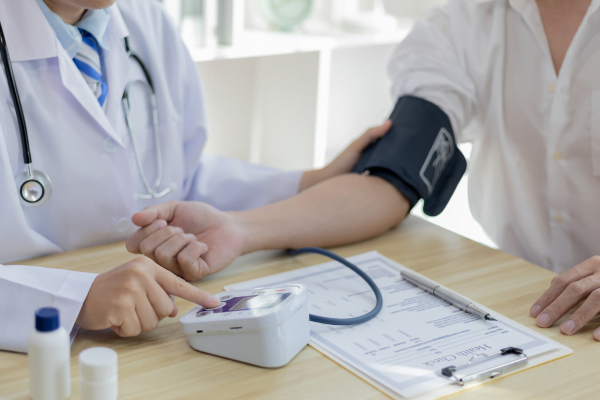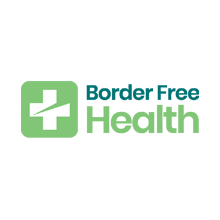High blood pressure, also known as hypertension, affects millions worldwide, yet it often remains undetected until it leads to severe health complications. In this guide, we’ll delve into the intricacies of high blood pressure, its associated risks, and crucial information to help you manage this silent killer effectively.
What is High Blood Pressure?
High blood pressure occurs when the force of blood against the walls of your arteries is consistently too high. This condition strains your heart, damages blood vessels, and increases your risk of serious health problems, including heart disease and stroke.
Blood Pressure Facts: Explained
Blood pressure is typically measured in millimeters of mercury (mm Hg) and consists of two numbers: systolic pressure (the top number) and diastolic pressure (the bottom number). The systolic pressure measures the force when your heart beats, while the diastolic pressure measures the force when your heart rests between beats.
Understanding Stroke Level Blood Pressure
Stroke level blood pressure also referred to as hypertensive crisis occurs when your blood pressure readings reach dangerously high levels. A systolic pressure of 180 mm Hg or higher and/or a diastolic pressure of 120 mm Hg or higher indicates a hypertensive crisis, requiring immediate medical attention.
The Dangers of High Diastolic Blood Pressure
While both systolic and diastolic pressures are important, high diastolic blood pressure can indicate arterial stiffness and increase the risk of heart disease, stroke, and other complications. Monitoring both numbers is crucial for comprehensive blood pressure management.
Heart Rate vs. Blood Pressure: Unraveling the Connection
Your heart rate and blood pressure are closely related but serve different functions. While blood pressure measures the force of blood against artery walls, heart rate indicates how many times your heart beats per minute. Both factors play vital roles in cardiovascular health and require attention for overall well-being.
Understanding High Blood Pressure and Low Heart Rate
In some cases, individuals may experience high blood pressure alongside a low heart rate. This combination can be indicative of various underlying health conditions and warrants thorough medical evaluation to determine the appropriate treatment approach.
High Blood Pressure in Young Adults
Contrary to common belief, hypertension isn’t exclusive to older individuals. Young adults can also develop high blood pressure due to factors such as poor diet, lack of exercise, stress, and genetics. Early detection and lifestyle modifications are key to preventing complications.
The 4 Stages of Hypertension
Hypertension is classified into four stages based on blood pressure readings. These stages range from elevated blood pressure to hypertensive crisis, with varying degrees of risk and recommended interventions.
Stage 1 Hypertension
In Stage 1 hypertension, your blood pressure readings fall between 130-139 mm Hg (systolic) or 80-89 mm Hg (diastolic). This signifies an elevated risk of cardiovascular problems. Lifestyle changes are typically recommended as the first line of treatment, including adopting a healthy diet, increasing physical activity, and managing stress. However, medication may not be immediately prescribed at this stage. Instead, close monitoring of your blood pressure is crucial to prevent progression to more severe stages.
Stage 2 Hypertension
Stage 2 hypertension is characterized by blood pressure readings of 140 mm Hg or higher (systolic) or 90 mm Hg or higher (diastolic). At this stage, the risk of heart disease, stroke, and other complications is significantly elevated. Lifestyle changes alone may not be sufficient to control blood pressure, and medication intervention may be necessary in addition to lifestyle modifications. It’s essential to adhere to the prescribed treatment plan and attend regular medical appointments for ongoing monitoring and adjustment of medications as needed.
Hypertensive Crisis
A hypertensive crisis occurs when blood pressure reaches dangerously high levels. It is divided into two categories: urgent and emergency. Urgent hypertensive crisis involves severe hypertension without acute target organ damage, with systolic blood pressure typically at 180 mm Hg or higher and/or diastolic blood pressure at 110 mm Hg or higher. Emergency hypertensive crisis, on the other hand, entails severe hypertension with evidence of acute target organ damage, such as chest pain, shortness of breath, or neurological symptoms.
White Coat and Masked Hypertension
White coat hypertension refers to elevated blood pressure readings in clinical settings due to anxiety or stress, despite normal blood pressure outside of medical environments. In contrast, masked hypertension involves normal readings in clinical settings but elevated blood pressure during daily activities or at home. While not classified as distinct stages, both conditions require careful monitoring and evaluation for appropriate management.
Hypertension at 25: A Growing Concern
While high blood pressure is more commonly associated with older age groups, an increasing number of individuals, including those as young as 25, are being diagnosed with hypertension. Lifestyle factors, genetics, and environmental influences contribute to this concerning trend, emphasizing the importance of early detection and proactive management strategies.
Takeaways
Understanding high blood pressure is essential for safeguarding your cardiovascular health. By staying informed, monitoring your blood pressure regularly, and adopting healthy lifestyle habits, you can effectively manage hypertension and reduce the risk of associated complications. Remember, knowledge empowers you to take control of your health and well-being
Frequently Asked Questions (FAQs)
Why is hypertension known as the “silent killer?”
Hypertension is dubbed the “silent killer” because it often presents no noticeable symptoms until it causes significant damage to vital organs. Regular blood pressure monitoring is crucial as high blood pressure can silently contribute to serious health complications over time.
When is blood pressure highest during the day?
For most people, blood pressure tends to be highest during the daytime hours, particularly in the morning. This phenomenon, known as morning hypertension, emphasizes the importance of monitoring blood pressure at different times of the day for accurate readings and tailored treatment plans.
What blood pressure is stroke level?
Blood pressure that reaches stroke level is typically classified as a hypertensive crisis. This involves a systolic blood pressure of 180 mm Hg or higher and/or a diastolic blood pressure of 120 mm Hg or higher. Such high readings require immediate medical attention to prevent severe complications like stroke.

